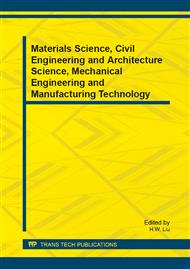p.333
p.337
p.342
p.346
p.350
p.354
p.359
p.365
p.370
Optimizing Control Trial of Concrete Dam in Middle-Later Cooling Age
Abstract:
Optimizing control of concrete dam in middle-later cooling age is discussed in allusion to the complex multi-factor problems which includes pipe cooling temperature, pipe cooling flow and pipe cooling time. This paper suggested an optimizing control method of concrete dam in middle-later cooling age based on the temperature dynamic prediction model of pouring storehouse. Combining the current measured temperature, it calculated the temperature cooling curve based on the pipe cooling calculation formula without heat resource. Then optimal pipe cooling measures of concrete pouring storehouse is obtained by optimization algorithm with middle-later coolings target temperature. Because of the small amount of calculation of the temperature dynamic prediction model that based on the pipe cooling calculation formula without heat resource, so optimizing control model of concrete dam in middle-later cooling age is feasible.
Info:
Periodical:
Pages:
350-353
Citation:
Online since:
January 2014
Authors:
Price:
Сopyright:
© 2014 Trans Tech Publications Ltd. All Rights Reserved
Share:
Citation:


